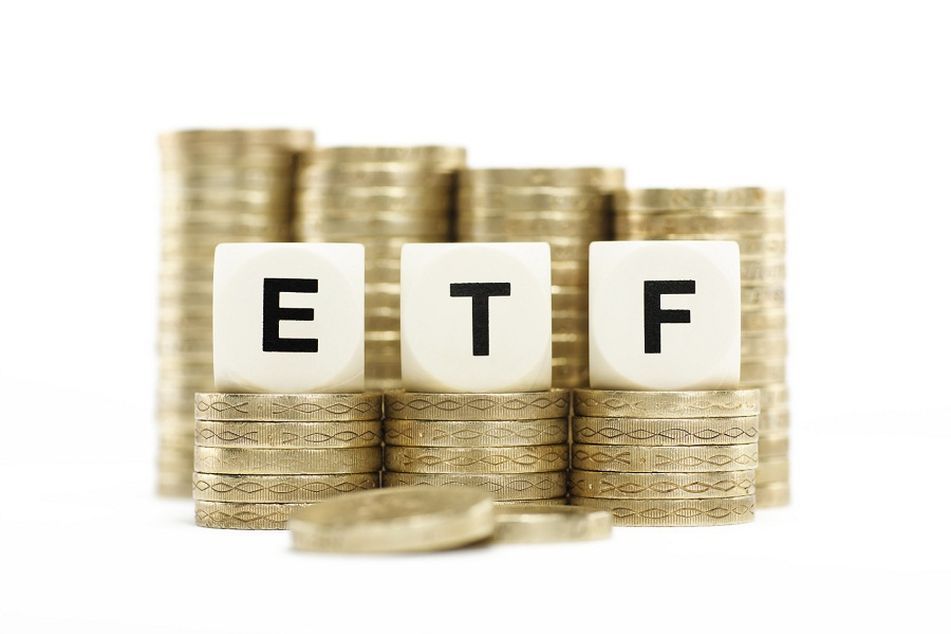For ETF providers, penetrating target-date fund market a challenge

The primary reason: TDFs built on institutionally priced mutual fund shares or collective trusts can produce as low or lower fees than ETFs.
A handful of money managers have recently launched all-ETF target-date series, hoping to penetrate the fast-growing target-date market that is the most popular qualified default investment alternative for defined contribution plans.
However, the managers and other ETF providers face a daunting task of making significant inroads in the DC arena, especially among large and midsized plans, consultants and researchers say. The primary reason: Target-date funds built on institutionally priced mutual fund shares or collective trusts can produce as low or lower fees than ETFs.
Providers of all-ETF target-date series promote their products as low-cost investments that offer access to multiple asset classes with more flexibility for participants as well as for portfolio managers. For smaller plans that cannot benefit from price deals enjoyed by their bigger brethren, ETF-based target-date funds could provide a low-cost alternative.
The all-ETF target-date pro-viders — Charles Schwab Investment Management, Transamerica Asset Management and State Farm Investment Management — join other money managers who offer ETFs as components of target-date funds, such as J.P. Morgan Asset Management (JPM) and BlackRock (BLK) Inc. (BLK)
In data prepared for Pensions & Investments, Morningstar Inc. said 192 individual target-date funds offer at least one ETF in their lineup. This figure represents 31.4% of the individual target-date funds tracked by the Chicago-based financial research firm.
Still, ETFs account for a very small piece of target-date fund assets. As of Aug. 31, open-ended target-date funds had $842.14 billion in assets but ETFs represented only 2%, or $16.83 billion, of that, according to Morningstar. (The firm’s research excluded closed-end target date funds and target-date portfolios using collective investment trusts.)
“The ETF by itself is not the (investment) strategy,” said Jeff Holt, Morningstar’s associate director of manager research. “It’s a vehicle. It’s a way to lower costs, but it’s not the only way.”
The efforts by the all-ETF providers come at a time when ETFs in general remain a tiny component of the DC market and more popular with smaller plans.
In a report to be released next month, Cerulli Associates found that ETFs represented less than 1% of 401(k) assets in 2015, said Jessica Sclafani, associate director, retirement, for the Boston firm. Stand-alone ETFs are most likely offered by plans with assets of $25 million or less, she said.
“Cerulli is not bullish on further expansion of ETFs in DC plans unless they are being used as underlying investments in a packaged product” like a target-date fund, she said.
“The target audience (for ETFs) is primarily small-plans where an outside adviser is involved,” said Winfield Evens, a partner at Aon Hewitt, Lincolnshire, Ill. His firm’s DC clients — large and midsized plans — “don’t see a cost advantage” to ETFs.
“For most midsized plan sponsors and larger plans, this model doesn’t have any traction because the client can just use existing collective investment trusts, which are cheaper even than ETFs.”
If clients offer ETFs, they do it through self-directed brokerage accounts, he added.
“It’s making something available that’s not being asked for by participants,” said Martin Schmidt, principal at HS2 Solutions, Chicago, a retirement plan and technology consulting firm. Most of his clients have DC assets ranging from $150 million to $5 billion-plus, although some have assets in the $25 million to $30 million range. If they use ETFs, they will offer a brokerage account, he said.
Jennifer Flodin, Chicago-based DC practice leader and senior consultant for Plan Sponsor Advisors, a division of Pavilion Advisory Group Inc., hasn’t heard requests for ETFs as core investments or white-label investments. “I don’t see the benefit of doing this in defined contribution plans at this point,” said Ms. Flodin, whose DC clients hold assets ranging from $20 million to $8 billion.
DC plans may be thwarted because their record keepers’ platforms can’t — or won’t — accommodate intraday trading of ETFs, she said. Expanded use of ETFs in DC plans will depend on more record keepers establishing platforms to handle trading intricacies, she said.
Aon Hewitt’s Mr. Evens said his firm’s record-keeping platform could accommodate ETFs if needed. “We would not do intraday pricing unless there is client demand,” he added. “Today, there is no demand.”
Last month, Schwab introduced its Schwab Target Index Funds. In November, State Farm converted its LifePath series to an all-ETF portfolio from a mixture of active and passive underlying investments. Transamerica launched its ClearTrack all-ETF series in March 2015.
State Farm spokeswoman Rachael Risinger wrote in an e-mail that the restructuring was done to reduce expenses to shareholders, but she didn’t provide details. The State Farm series is subadvised by BlackRock (BLK).
Schwab’s all-ETF target-date fund enables the company to offer “an index target-date fund solution in a mutual fund format,” said Jake Gilliam, the Richfield, Ohio-based senior multiasset class portfolio strategist for Charles Schwab Investment Management. “Prior to this, our index target-date fund offering was only available in a collective trust.”
Schwab created the all-ETF target-date series with a “laser focus” on fees and a desire for greater flexibility, Mr. Gilliam said. The mutual fund format “provides portability for plan participants when they leave their 401(k) plan, unlike collective trust funds, which are only available to qualified retirement plans,” he said.
The all-ETF series is the only one of four Schwab target-date series that use ETFs, all the ETFs are Schwab’s. Schwab also offers an all-ETF 401(k) plan that doesn’t use target-date funds, but Mr. Gilliam declined to provide details.
Transamerica’s ClearTrack target-date series had $380 million in assets as of Aug. 31, said Thomas Wald, chief investment officer of Transamerica Asset Management, Denver. The series is subadvised by QS Investors, a unit of Legg Mason (LM), and it contains ETFs from BlackRock, Schwab, State Street Global Advisors and Vanguard Group Inc.
“We wanted to build a solution to diversified investing” with low costs, Mr. Wald said. “There are ETFs for just about every asset class out there.”
Early clients have been DC plans with assets of less than $20 million as well as individual retirement account holders. “If your objective is to focus on asset allocation, ETFs can likely provide the tools for that at a lower cost,” he said.
BlackRock (BLK) uses ETFs as “building blocks” in some target-date products, said Anne Ackerley, managing director and head of BlackRock’s U.S. and Canada defined contribution group. All ETFs are BlackRock’s. The company is the largest ETF provider with $1.2 trillion in iShares AUM worldwide, including $912 billion in the U.S.
BlackRock’s LifePath Index target-date series, launched in 2011, uses ETFs, whose role ranges from 18.6% to 42.4% of assets, depending on fund vintages within the series, according to Morningstar.
Institutional shares of its LifePath target-date series, which combines active and passive investments and which was launched in 1994, hold ETFs ranging from 4.4% to 10.6% of assets depending on various fund vintages, Morningstar said.
BlackRock uses ETFs in these funds “for cost, transparency and access to certain asset classes,” such as emerging markets equity and real estate investment trusts, Ms. Ackerley said.
J.P. Morgan Asset Management (JPM) has offered its SmartRetirement Blend target-date series since 2011, using a mixture of active and passive funds. Approximately 60% of the target-date portfolio’s $900 million in AUM is invested in ETFs – the only passive investments in the series.
“This is a way for us to get access to passive management in a quick, straightforward fashion,” said Dan Oldroyd, managing director, portfolio manager and head of target date strategies for multi-asset Solutions. Using ETFs makes it easier for portfolio managers to change investments compared to mutual funds, he said.
The “sweet spot” for marketing this target-date series is plans with DC assets in the $50 million to $1 billion range, he said. “They aren’t going to custom target-date funds. These are fee-conscious buyers.”
This report first appeared in Pensions & Investments
Learn more about reprints and licensing for this article.








